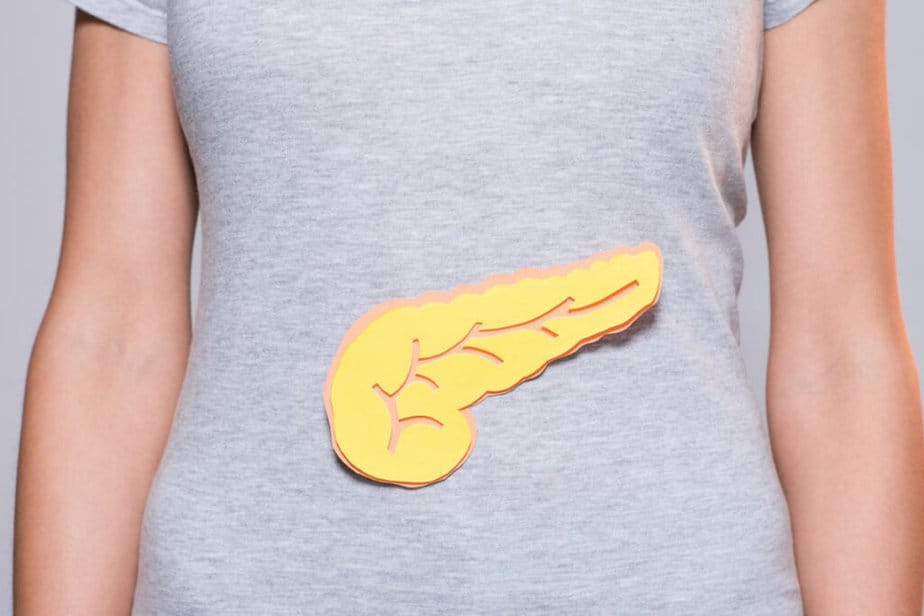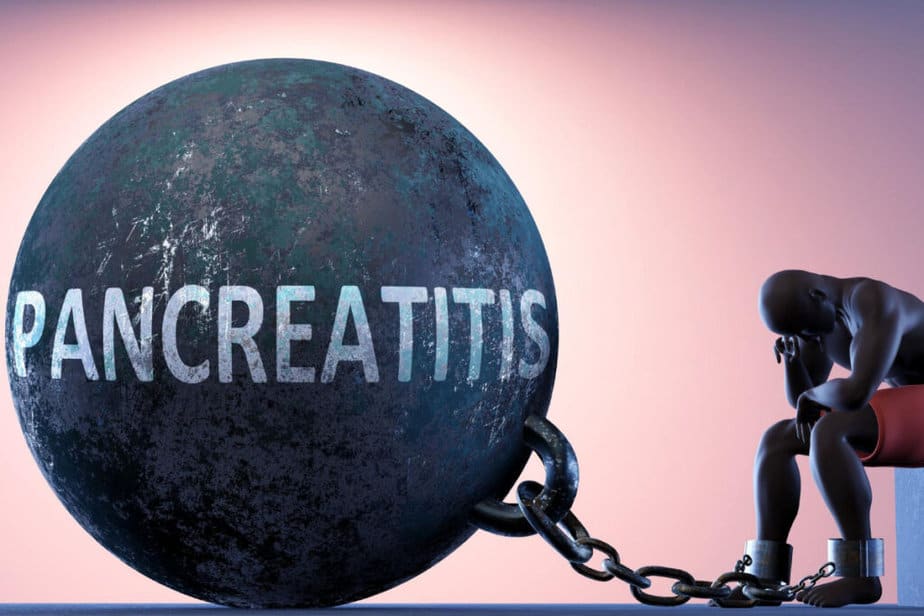There’s a lot we don’t understand about how our pancreas works. This includes why it gets inflamed, and why it sometimes becomes cancerous.
But we do know that inflammation is bad for us. We also know that certain foods can cause inflammation. And we know that eating healthy helps prevent inflammation.
The pancreas is an essential organ located behind the stomach and next to the small intestine. It produces enzymes that help break down food for digestion and hormones such as insulin that regulate blood sugar levels.
However, when something goes wrong with the pancreas, it can lead to a condition called pancreatitis. Pancreatitis occurs when the pancreas becomes inflamed, causing severe abdominal pain and digestive problems.
Understanding how the pancreas works and what causes inflammation can help individuals take control of their health by making lifestyle changes and seeking appropriate medical treatment if necessary.
This article will help you understand the pancreas, pancreatitis, and how these two relate to each other. By understanding the relationship between the pancreas and pancreatitis, you’ll be able to make healthier food choices and live a longer, healthier life.
Why Is a Healthy Pancreas So Vital?
An integral component of the digestive system, the pancreas secretes the digestive enzymes that help digest fats, proteins, and carbohydrates. It also has a function in the endocrine system, releasing insulin and glucagon, hormones that assist the body in using the glucose it derives from food for energy.

The pancreas is one of the most vital organs in our body. It plays an essential role in maintaining healthy digestion and metabolism by producing hormones such as insulin and glucagon that regulate blood sugar levels.
The Pancreas and Its Role in Your Digestive System
Part of the digestive system, the pancreas is a six-inch long, flat gland that resides near the middle of the abdomen, behind the stomach, in between the spleen and the upper part of the small intestine (duodenum).
The pancreas is an integral component of the digestive system with two different functional parts performing vital, life-sustaining tasks.
The Islets of Langerhans are the endocrine cells of the pancreas that secrete insulin and glucagon, hormones needed to regulate the metabolism of sugar.
The acinar cells are the exocrine cells of the pancreas that produce and transport the digestive enzymes (including chymotrypsin, amylase, lipase, and trypsin) and alkaline fluid that aid in the breakdown of proteins, carbohydrates, and fats.
Food is transported from the mouth to the stomach via the esophagus, which empties into the stomach. Directly from the stomach, food flows into the first part of the small intestine, the duodenum.
Here, bile – a greenish-yellow fluid produced by the liver to aid in the digestion of fats – and pancreatic fluids (rich in digestive enzymes mentioned above) enter the digestive system.
Food, bile, and pancreatic fluid make their way through several feet of intestine, including the remainder of the duodenum, the jejunum and finally the ileum, prior to reaching the colon.
Most digestion and absorption of nutrients occurs in the small intestine.
However, dysfunction or damage to the pancreas can cause various complications, including pancreatic cancer and pancreatitis, which affects millions of people worldwide.
What is Pancreatitis
Pancreatitis is an inflammatory condition that occurs when pancreatic digestive enzymes become active inside the pancreas before they have a chance to reach the small intestine.
As a result, the enzymes attack and destroy the pancreatic tissue rather than the foods they are designed to break down. This leads to inflammation and swelling that can damage nearby tissues and organs.

There are two main types of pancreatitis that are defined by the length of time that you’ve had pancreatitis: Acute vs Chronic Pancreatitis.
1. Acute Pancreatitis
Acute pancreatitis occurs suddenly, lasts just a few days, and is normally resolved with simple dietary changes and time. Approximately 80,000 acute pancreatitis cases occur in the United States each year, with about 20% of them being classified as severe.
Some sufferers experience more than one acute attack from which they completely recover (recurrent acute pancreatitis). Acute pancreatitis, however, can be extremely serious and even deadly in some cases.
The most common causes of acute pancreatitis are gallstones and alcohol.
2. Chronic Pancreatitis
Chronic pancreatitis develops gradually and persists over many years. It does not resolve itself, but instead leads to chronic scarring, and the eventual destruction of the pancreas and nearby tissues.
Smoking and alcohol can play a role in the development of chronic pancreatitis.
In some cases, exocrine pancreatic insufficiency can develop, which leads to malabsorption of nutrients and chronic diarrhea. Read more about it in this in-depth guide: What is Malabsorption?
Endocrine pancreatic insufficiency can also occur, which results in glucose intolerance and diabetes.
Signs and Symptoms of Pancreatitis
Sufferers of both acute and chronic pancreatitis may experience mild to severe abdominal pain, often with nausea, vomiting, and loss of appetite.
The onset of acute pancreatitis is usually sudden, and is marked by a few days of mild to severe pain in the upper abdomen.
The pain may be constant, and can eventually radiate to the back and other areas; it may increase in intensity when food or alcohol is ingested.
Pain can be accompanied by fever, due to the significant inflammation. In cases of gallstone pancreatitis, jaundice (yellowing of skin or eyes) and dark urine is also possible.
Other symptoms include a swollen and/or tender abdomen, and a rapid pulse. In severe cases, dehydration and low blood pressure can occur. Urine output can be decreased.
Chronic pancreatitis can take several years to exhibit signs and/or symptoms, and some people never experience pain. Most, however, have intermittent abdominal pain. As with acute pancreatitis, it worsens when they eat or drink, and can eventually spread to the back and/or become constant.
The abdominal pain sometimes ends when – it is believed – the pancreas stops making digestive enzymes. Other symptoms include weight loss, fatty and/or foul-smelling stools, and diabetes. Chronic pancreatitis can also lead to malnutrition, drug addiction, and pancreatic cancer.
Both acute and chronic pancreatitis can lead to serious, long-term complications. Bleeding, infection, pseudocysts (fluid collections), or necrosis (dead tissue) can develop.
In addition, enzymes and toxins may enter the bloodstream; the heart, kidneys, lungs, and/or other organs may fail. If bleeding occurs in the pancreas, shock and death may result.
Hereditary pancreatitis is marked by its presence in two or more family members within the same generation. While the genetic defect that causes the disease is present at birth, symptoms do not normally present themselves until the second decade of life.
In fact, hereditary pancreatitis may not be diagnosed until early adulthood. In most cases, attacks (as described in acute pancreatitis, above) progress into chronic pancreatitis.
Causes and Risk Factors for Pancreatitis
While the cause of pancreatitis is often excessive alcohol consumption and/or gallstones, there are many other causes:
- Abdominal trauma
- Blockage of pancreatic duct due to trauma or pseudocysts
- Certain autoimmune conditions
- Congenital conditions such as pancreas divisum where the pancreatic duct does not develop normally (this can be seen in up to 10% of the population, but does not always cause pancreatitis)
- Cystic fibrosis
- Ethnicity – black Americans are more likely to develop acute pancreatitis than white Americans
- Gallbladder disease
- Gender – men are more likely to develop pancreatitis than women
- Genetic mutations – abnormalities in one or more genes may predispose an individual to pancreatitis, as is the case with hereditary pancreatitis
- High levels of triglycerides in the blood
- High levels of calcium in the blood
- Idiopathic (unknown cause)
- Medications including corticosteroids and NSAIDs, blood pressure lowering drugs, antibiotics, seizure medications, and immunosuppressants
- Pancreatic cancer
- Scorpion bites
- Surgery in the abdomen or retroperitoneum (back of the abdomen)
- Viral infections, including the mumps and Epstein-Barr virus
Diagnosing Pancreatitis
In addition to a medical history and physical examination, various tests are used to secure an accurate diagnosis.
For a diagnosis of pancreatitis 2 of 3 must be present:
- Characteristic abdominal pain.
- Elevated amylase/lipase (over 3 times the upper limit of normal for the lab).
- Inflammation of the pancreas seen on imaging.
To help diagnose acute pancreatitis and search for a cause, the following tools are used:
- Elevated levels of the pancreatic enzymes, amylase, and lipase.
- Elevated liver enzymes and bilirubin (suggests gallstones).
- Elevated white blood cell count.
- High blood sugar (hyperglycemia).
- Levels of calcium, bicarbonate, glucose, magnesium, potassium, and sodium.
- Blood counts (hematocrit) and renal function (BUN and creatinine) can help determine severity of pancreatitis and reductions in these values are used to assess response to treatment.
In addition, an ultrasound or a computerized axial tomography (CT) scan of the abdomen may be used to examine the pancreas and check for gallstones, a bile or pancreatic duct problem, pseudocysts, or inflammation and/or destruction of the gland.
To diagnose chronic pancreatitis, blood tests and imaging can also be used. If there is concern for exocrine insufficiency, stool testing may also be obtained.
Treating Pancreatitis
The specific treatment regimen for pancreatitis depends partially on the cause, which is why testing to determine what is responsible for bringing on the disease is vital.
Treatment is designed to maintain and support bodily functions, and prevent complications. The primary goal of treatment for acute pancreatitis is to manage pain and prevent complications such as infection, organ failure, or pancreatic necrosis.
It involves pain relief, nausea relief, limiting oral intake (especially fat restriction), and ensuring that adequate fluids are received intravenously. Patients with pancreatitis are typically very dehydrated.
A hospital stay is often required in order to replace bodily fluids intravenously. If pancreatic pseudocysts are involved, and they are relatively large, it may be necessary to drain them.
Sometimes surgery is necessary to remove the gallbladder, or part of the pancreas itself (in rare cases).
Treatment for chronic pancreatitis involves pain relief, and the implementation of a high-carbohydrate, low-fat diet, and pancreatic enzyme supplements to be taken with meals to help with digestion and weight loss.
Enzyme therapy can be helpful in treating malabsorption problems. This supplements the digestive enzymes that the pancreas is no longer effectively producing to help with breakdown of food.
This helps reduce malabsorption related diarrhea and increase nutrient absorption. In some cases, the enzyme supplementation also helps with pain. Sometimes insulin is needed in order to control diabetes.
Elimination of alcohol and tobacco can reduce any additional damage to the pancreas, but once chronic pancreatitis has developed, it is unlikely to resolve completely.
Reducing the Number of Pancreatitis Attacks and Minimizing Symptoms
While most people with acute pancreatitis recover completely, chronic pancreatitis is associated with lifelong symptoms such as pain and malabsorption.
In both cases, it is crucial to do whatever is possible to care for your pancreas.
- Avoid alcohol
- Drink plenty of fluids
- Eat smaller meals
- Implement a high-carbohydrate diet
- Limit dietary fat
- Use safe methods to control pain (ideally avoiding narcotics)
Making lifestyle changes can help to manage pancreatitis attacks and symptoms. Dietary modifications and stress management techniques can make all the difference.
First and foremost, it is imperative to identify any trigger foods that may aggravate symptoms. This often involves eliminating high-fat or spicy items from one’s diet.
In addition to modifying their food choices, patients should also implement stress management techniques into their daily routine. Stress can lead to inflammation in the body, which could exacerbate pancreatic issues.
Encourage your patients to find activities that help them relax and unwind- whether it be yoga, meditation or simply reading a book before bed. It is important for them to remember that taking care of their mental health will ultimately benefit their physical health as well.
By making these lifestyle changes, patients have the power to take control of their condition and prevent further damage to their pancreas.
Long-Term Outlook And Prognosis of Pancreatitis
After a patient has been diagnosed with pancreatitis, it is important to manage their symptoms and monitor their progress. Treatment options may include pain management, nutritional support, and antibiotics if an infection is present. In severe cases, hospitalization may be necessary.
The long-term outlook for patients with pancreatitis varies depending on the severity of the condition and how quickly treatment was initiated. Patients who experience multiple attacks of acute pancreatitis or develop chronic pancreatitis may have reduced pancreatic function that can lead to complications such as diabetes or malabsorption syndrome.
However, with proper management and follow-up care, many patients are able to restore some or all of their pancreatic function over time. This can help reduce the risk of future complications and improve overall quality of life.
To promote restoration of pancreatic function:
- Quit smoking: Smoking can exacerbate inflammation in the pancreas.
- Follow a healthy diet: Eating foods low in fat and high in fiber can reduce stress on the pancreas.
- Manage any underlying conditions: Conditions like high cholesterol or triglycerides should be managed properly to avoid further damage to the pancreas.
Remember that successful pancreatitis management involves ongoing communication between the patient and healthcare provider to ensure that symptoms are being effectively managed and progress is being made towards restoring pancreatic function.
Other gastronintestinal conditions that you might be interested in reading more about:
Pancreatitis FAQs
Can Pancreatitis Be Prevented?
Pancreatitis can’t be prevented, but you can reduce the risk and factors that increase your chances. When it comes to pancreatitis, adopting certain dietary recommendations and lifestyle modifications can significantly lower your risk of developing this condition.
Small changes in one’s daily routine can make all the difference. Incorporating more fruits and vegetables into your diet while cutting down on processed foods high in fats and sugars is a great starting point.
Additionally, regular exercise and limiting alcohol consumption are crucial components to reducing your risk for pancreatitis. By taking control of our health through these simple steps, we can prevent pancreatitis before it even has a chance to develop.
Is Pancreatitis Hereditary?
Genetic predisposition can play a role in the development of pancreatitis, but lifestyle factors also have a significant impact. However, it’s important to note that not everyone who carries these mutations will develop pancreatitis.
Lifestyle factors such as heavy alcohol consumption and high-fat diets can further increase the risk. While we cannot change our genetics, we do have control over our daily habits and choices, making prevention possible for those at higher risk.
How Common Is Pancreatitis?
Pancreatitis is not as rare as one might think. Pancreatitis prevalence has been on the rise in recent years due to a variety of causes.
Alcohol consumption is still the leading cause of acute pancreatitis while chronic pancreatitis is more commonly associated with long-standing conditions such as cystic fibrosis or autoimmune diseases.
However, there are many other factors that can contribute to developing this condition, including high levels of triglycerides in your blood, certain medications, infections, and even gallstones.
It’s important to understand these risk factors so that you can take control of your health and minimize your chances of developing pancreatitis.
Can Alcohol Consumption Cause Acute Pancreatitis?
Alcohol related complications are a common cause of acute pancreatitis. Many suffer from this condition due to excessive alcohol consumption.
The good news is that there are effective treatment options available for those seeking help. However, it’s important to understand that prevention is key and limiting or avoiding alcohol altogether can significantly reduce the risk of developing acute pancreatitis.

